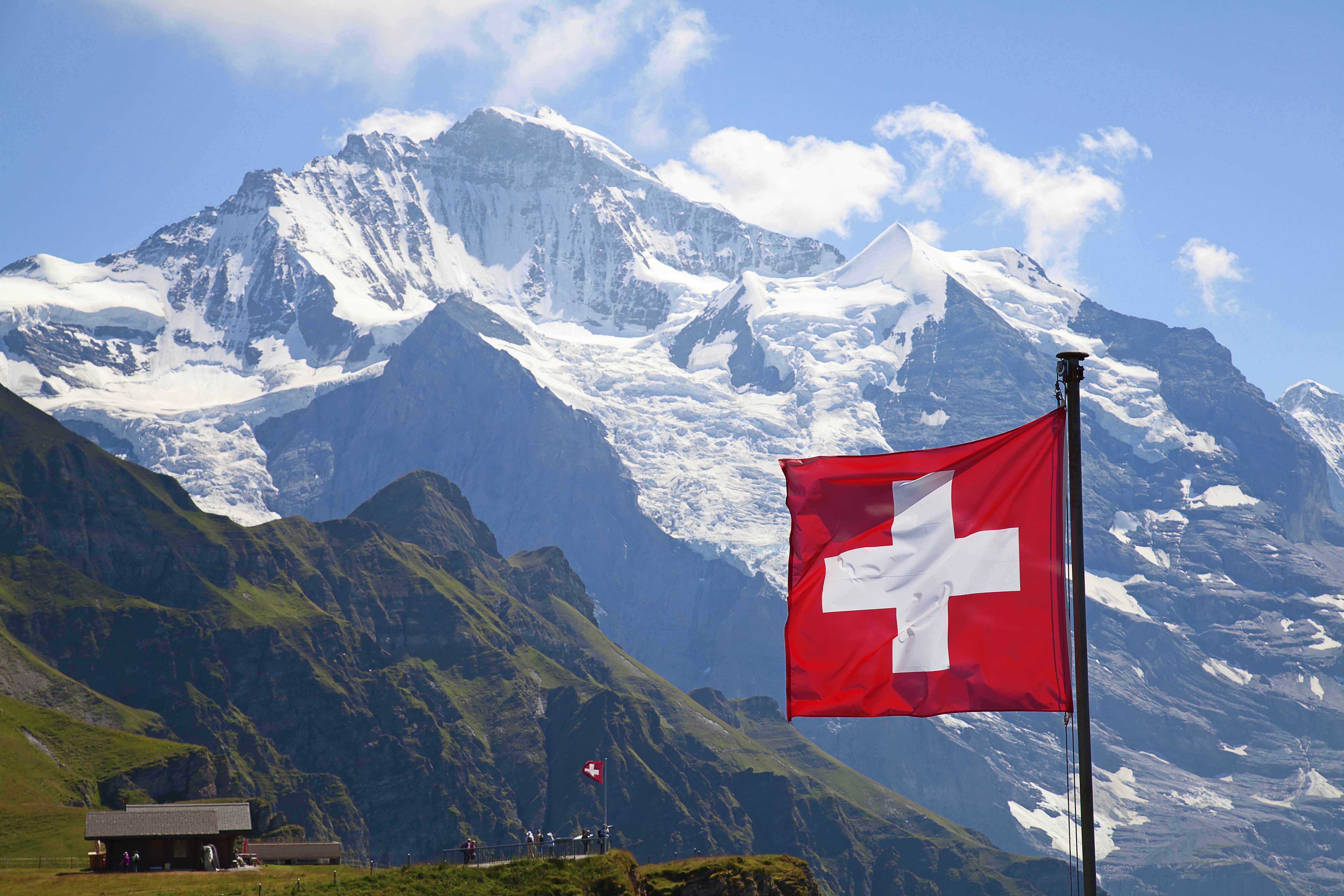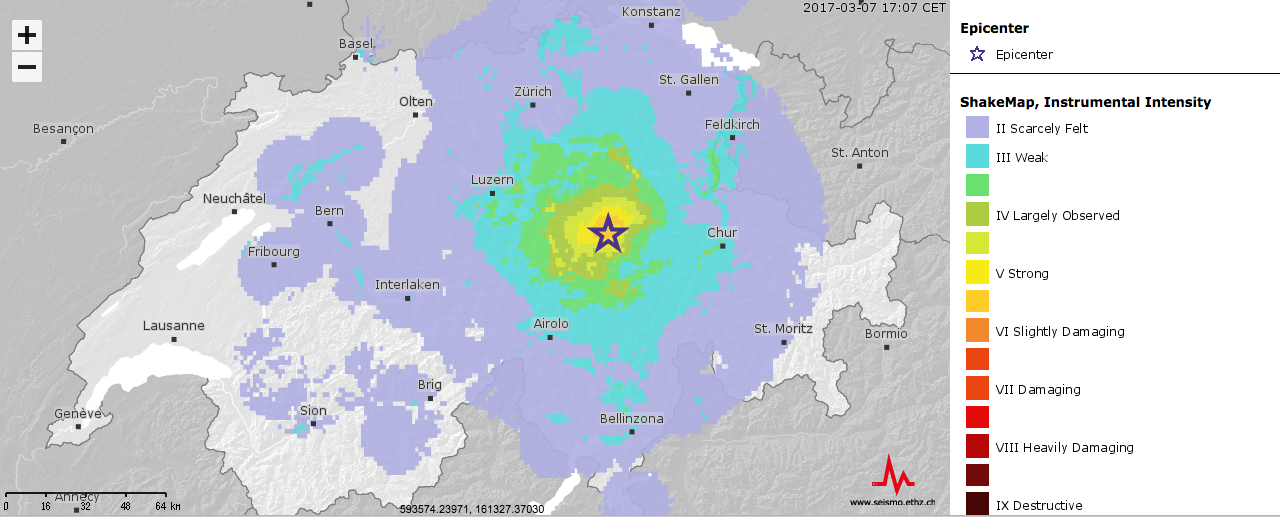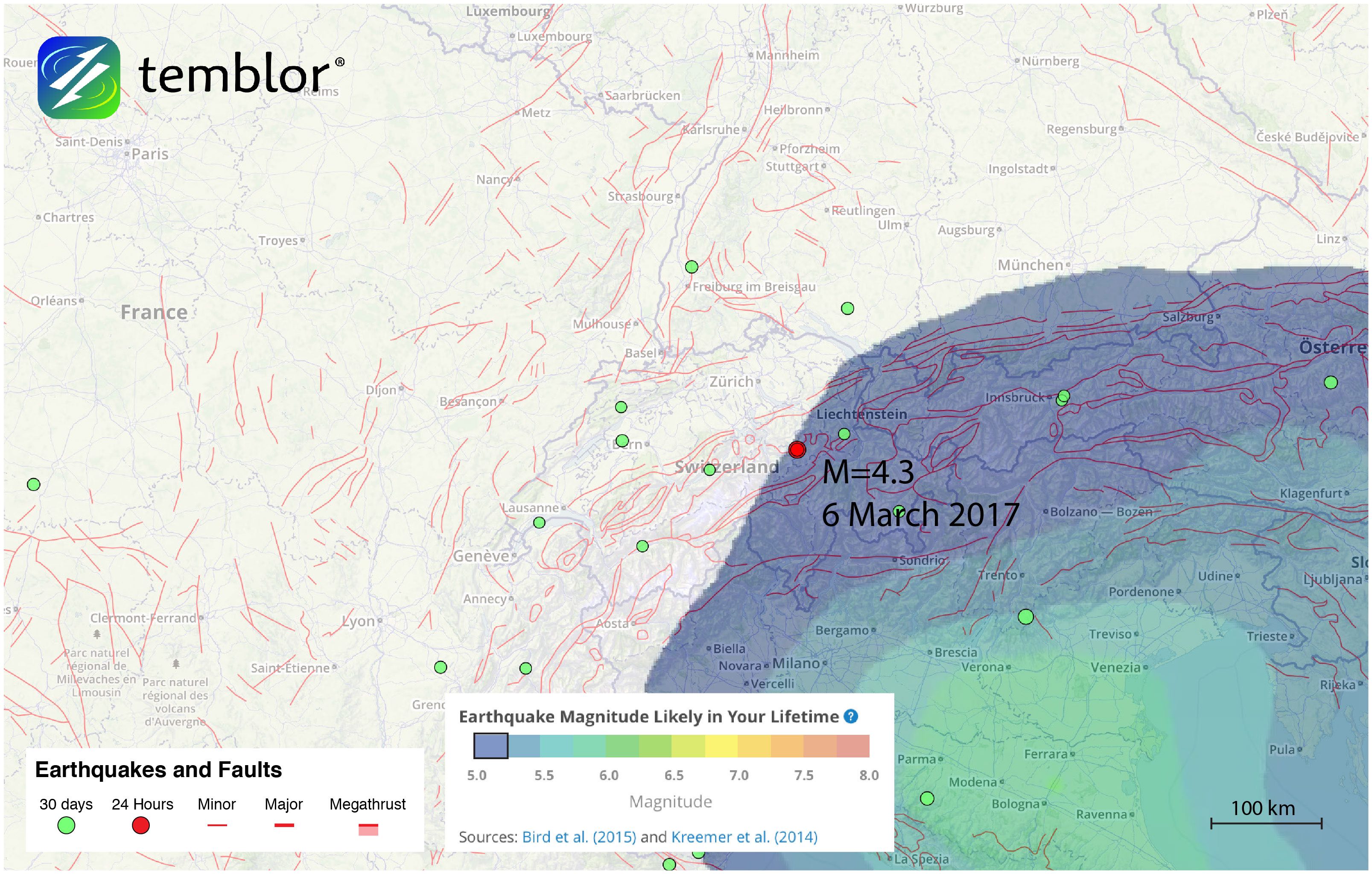By David Jacobson, Temblor
See earthquakes in Switzerland

A M=4.3 earthquake shook central Switzerland yesterday, and was felt in the country’s largest city, Zurich, approximately 60 km north of the epicenter according to the Swiss Seismological Service. While the Swiss service reported the magnitude as a M=4.6, the USGS classified it as a 4.3.

While Switzerland is not a very seismically active country, only 21 earthquakes exceeded M=2.5 in 2014, the M=6.7 Basel earthquake in 1356 is the largest earthquake ever recorded in Central Europe. If such a quake were to happen today, it would be devastating to the region. Estimates suggest that a repeat event would result in up to 1,000 casualties and economic losses reaching $140 billion (According to SwissRe). More recently there was a M=6.2 earthquake in 1855. The majority of these earthquakes are caused by the collision of the European and African plates. Having said that, yesterday’s earthquake had a strike-slip focal mechanism according to the USGS. Therefore, event is a reminder that the Alps are indeed earthquake country.

Based on the Global Earthquake Activity Rate (GEAR) model, which forecasts earthquake magnitude all over the globe, yesterday’s event should not be considered surprising. The likely earthquake magnitude in your lifetime for this region is 5.0-5.25. Nonetheless, a M=4.3 is strong enough to cause very light damage to household objects according to the Swiss Seismological Service. The GEAR model is available in Temblor.
In addition to this model, the Swiss have developed their own seismic hazard model. One of these maps can be seen below. This model shows that yesterday’s quake occurred in a region of low to moderate seismic hazard. This map shows the peak ground acceleration with a 2% chance of occurring in 50 years.

Overall, while yesterday’s earthquake in Switzerland will not make headlines as it only resulted in moderate shaking and did not cause damage, it is a reminder that earthquakes occur all over the world. Additionally, it gives us at Temblor an opportunity to highlight that even if there haven’t been large earthquakes in a region recently, it does not mean they cannot happen.
References
Swiss Seismological Service
Stefan Wiemer, Laurentiu Danciu, Ben Edwards, Michèle Marti, Donat Fäh, Stefan Hiemer, Jochen
Wössner, Carlo Cauzzi, Philipp Kästli, Katrina Kremer, Seismic Hazard Model 2015 for Switzerland (SUIhaz2015), 2016, Swiss Seismological Service (SED) at ETH Zurich, DOI: 10.12686/a2, Link
USGS
- Structures can be both earthquake-resilient and sustainable - July 19, 2024
- Earthquakes rattle Palawan, Philippines: Is the region as stable as we thought? - July 3, 2024
- Seismic retrofit rates highlight inequitable efforts - June 20, 2024
